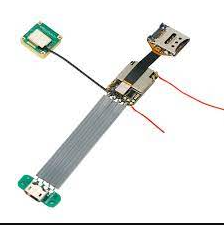esim tracker

Information for esim tracker
Are you tired of losing your valuable possessions or misplacing them? Do you want to keep track of your belongings in real-time, no matter where they are? Enter the esim tracker – a revolutionary device that helps you monitor and locate your assets with ease. In this article, we’ll explore what an esim tracker is, how it works, its benefits, and even guide you on creating one yourself! So buckle up and read on to discover everything you need to know about esim trackers.
What is an esim tracker?
An esim tracker is a small electronic device that uses embedded SIM technology to connect to cellular networks and transmit data. It’s designed for people who want to keep track of their belongings or monitor the movements of vehicles, pets, or kids.
Unlike traditional GPS trackers, an esim tracker can operate without requiring any physical sim card. The device works by using a virtual sim card installed on it, which connects directly with mobile networks and transmits location data in real-time.
One significant advantage of an esim tracker is its compact size that allows it to be easily concealed inside bags, wallets, and other personal items. Additionally, some models come equipped with advanced features such as geofencing that sends alerts when a target moves outside of designated areas.
An esim tracker provides individuals and businesses alike with greater security over their valuable assets by providing real-time tracking information.
How does an esim tracker work?
An esim tracker works by using an embedded SIM (Subscriber Identity Module) that is directly integrated into the device. The embedded SIM serves as a virtual counterpart to traditional physical SIM cards, eliminating the need for swapping out cards when changing networks or devices.
The esim tracker connects to cellular networks by using a technology called Over-The-Air provisioning (OTA). This means that network information and settings can remotely downloaded onto the device without requiring any physical interaction with it.
Once connected, the esim tracker constantly communicates with nearby cell towers to determine its location through GPS coordinates. These coordinates then transmitted back to a centralized server where they can used for tracking and monitoring purposes in real-time.
One of the main advantages of using an esim tracker is its ability to work across multiple carriers and territories without requiring any additional hardware changes. This makes it ideal for use in global asset tracking applications where reliable connectivity is critical.
While there are many factors at play behind how an esim tracker works, what’s most important is understanding its practical applications and benefits for businesses looking to streamline their operations and improve their bottom line.
What are the benefits of using an esim tracker?
Using an esim tracker has a wide range of benefits, making it stand out from traditional sim cards. Firstly, it eliminates the need for physical SIMs, allowing for easier device management and reduced potential for lost or damaged cards.
Secondly, esim trackers can support multiple mobile networks without requiring a separate card for each one. This means that users can switch between providers with ease and save on roaming fees when traveling abroad.
Additionally, as they embedded within devices rather than being interchangeable like traditional SIMs, esim trackers provide enhanced security against theft or fraudulent use of phone numbers.
Furthermore, utilizing an tracker allows for greater flexibility in terms of plans and pricing options as various service providers compete in this growing market.
The benefits of using an tracker are numerous; providing more efficient device management capabilities while offering greater freedom to choose network services at competitive rates.
How to create an esim ?
Creating an esim may sound daunting, but with the right tools and guidance, it can be a fulfilling project. To start, you’ll need to gather all the necessary components such as a microcontroller board, GPS module, cellular modem and antenna.
Next up is programming your microcontroller board – this involves coding the logic for reading data from the GPS module and sending it through the cellular network to your chosen server or cloud service. Some popular choices for coding platforms include Arduino IDE or Python.
Once you successfully programmed your microcontroller board, it time to test out it functionality by powering it on and checking if location data transmitted correctly. You may also want to add additional features such as battery optimization techniques or security measures like encryption.
Remember that creating an esim requires a basic understanding of electronics engineering principles and programming skills; however there are many tutorials available online which can greatly aid in learning these new concepts!
Conclusion
An tracker is a cutting-edge technology that offers numerous benefits to its users. It simplifies the process of tracking devices by eliminating the need for physical SIM cards and making it possible to switch between different network operators seamlessly.
If you want to create your own esim , there are various options available in the market with varying features and functionalities. However, before investing in one, make sure to do thorough research on their capabilities and compatibility with your devices.




